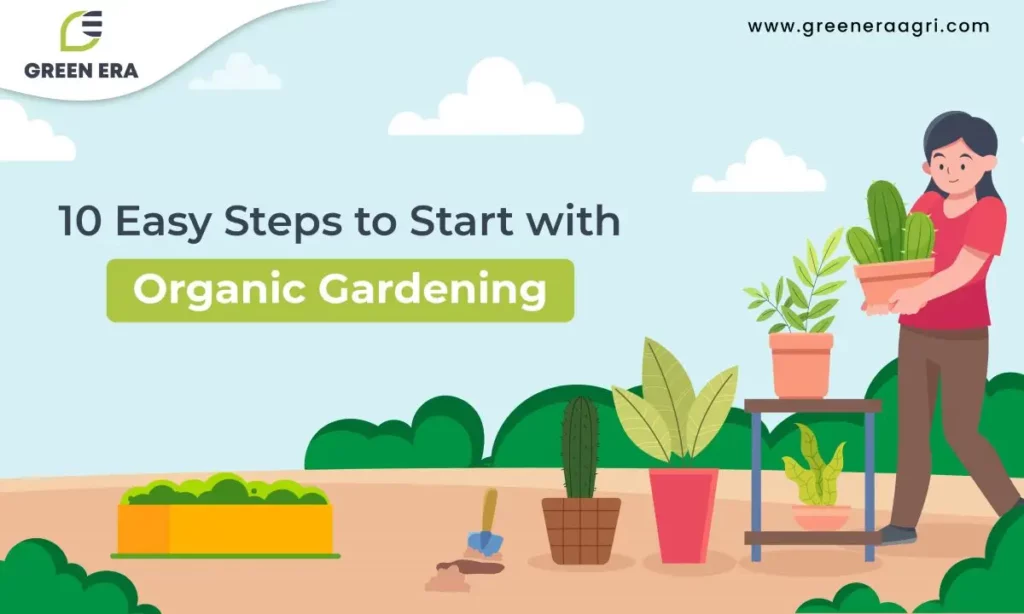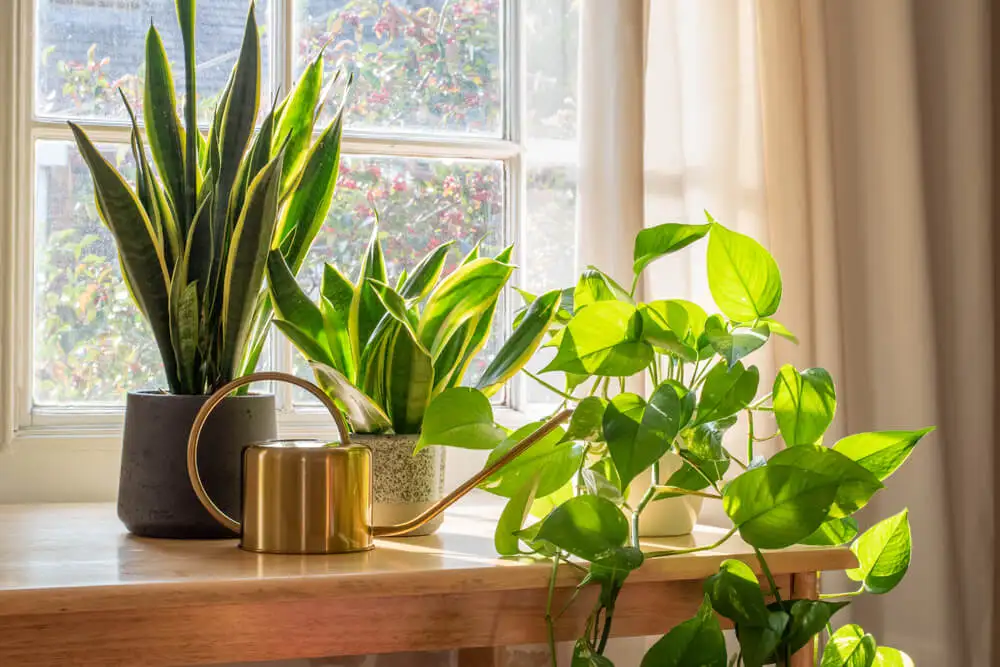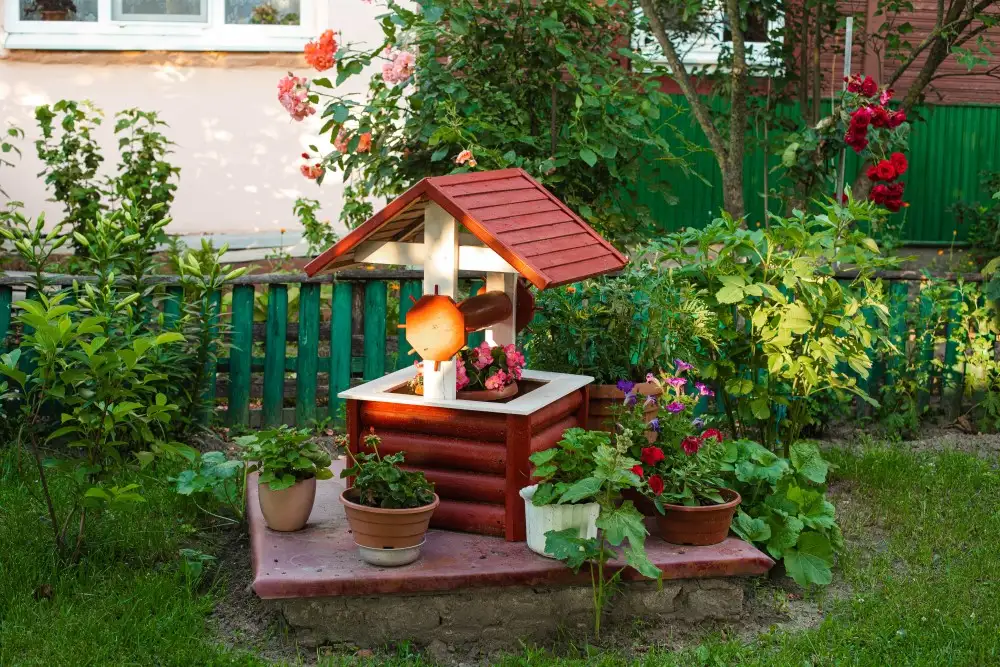Indoor plant maintenance calls for focus, endurance, and a little bit of expertise. You can give your indoor plants the care they require to flourish by adhering to these 15 crucial procedures. Your efforts will be rewarded with healthy, colorful, and growing indoor plants if you understand their requirements, keep an eye out for pests, water judiciously, and maintain a suitable atmosphere.
So, enjoy being a plant parent, and watch your indoor oasis grow!
Here’s A Guide On How To Start An Organic Garden.
1. Understand Organic Gardening Basics:
Begin by familiarizing yourself with the principles of organic gardening. It involves nurturing the soil, using organic fertilizers and vermicompost, promoting biodiversity, and avoiding synthetic pesticides and herbicides. Embrace the concept of working in harmony with nature to create a thriving ecosystem in your garden.
2. Select the Right Location:
Choose a sunny spot in your yard or balcony for your organic garden. Most plants require at least 6-8 hours of direct sunlight each day. Ensure the area has access to water and is away from potential contaminants like industrial pollution or chemical runoff.
3. Prepare the Soil:
Healthy soil is the foundation of a successful organic garden. Test your soil’s pH level and nutrient content. Amend the soil with organic matter such as compost, well-rotted manure, or leaf mold to improve its structure, fertility, and moisture-holding capacity.
4. Plan Your Garden Layout:
Sketch a layout of your garden, considering factors like plant spacing, companion planting, and crop rotation. Place taller plants on the north side to avoid shading smaller ones. Group plants with similar water and sunlight requirements together for efficient watering and care.
5. Choose Organic Seeds or Seedlings:
Select organic seeds or seedlings from reputable sources. Organic seeds are free from synthetic chemicals and genetically modified organisms (GMOs). Opt for heirloom varieties, which are open-pollinated and offer diverse flavors and characteristics.
6. Plant and Mulch:
Follow the planting instructions for each plant, including proper spacing and planting depth. After planting, apply a layer of organic mulch, such as straw, shredded leaves, or compost, around the plants to suppress weeds, conserve moisture, and improve soil health.
7. Water Wisely:
Water your plants deeply and infrequently to encourage deep root growth. Use a watering can or a drip irrigation system to deliver water directly to the plant’s root zone, minimizing water loss through evaporation. Avoid overhead watering to prevent leaf diseases.
8. Implement Organic Pest Management:
Promote biodiversity by attracting beneficial insects, birds, and pollinators to your garden. Use organic pest control methods like handpicking pests, introducing beneficial insects, applying homemade insecticidal soaps or plant-based repellents, and creating physical barriers.
9. Practice Natural Weed Control:
Keep weeds at bay by regularly hand-pulling them or using tools like hoes or weeders. Mulching with organic materials will also help suppress weed growth. Avoid chemical herbicides, as they can harm beneficial organisms and contaminate the soil.
10. Maintain and Nourish Your Garden:
Regularly inspect your plants for signs of disease or nutrient deficiencies. Prune, stake, and train your plants as needed for proper growth. Feed your garden with organic fertilizers like compost, worm castings, or organic plant-based fertilizers to replenish soil nutrients.
Conclusion:
Embarking on an organic gardening journey is both rewarding and fulfilling. By following these 10 easy steps, you can lay a strong foundation for your organic garden. From understanding the basics of organic gardening to selecting the right location, preparing the soil, choosing organic seeds, and implementing organic pest and weed control, your garden will flourish in harmony with nature. Embrace the joy of growing your own food organically and enjoy the benefits of a sustainable and environmentally friendly garden. Happy organic gardening!
Also Read: 10 Best Benefits of Vermicompost for Plants Boost Your Garden’s Health
Frequently Asked Questions (FAQs)
-
How to do organic gardening at home?
Organic gardening at home involves using natural methods to grow plants without synthetic pesticides or fertilizers. It includes practices like composting, using organic soil, and companion planting for pest control.
-
How to do organic farming step by step?
Step 1: Prepare the soil organically
Step 2: Choose organic seeds or seedlings
Step 3: Use organic fertilizers and compost
Step 4: Practice crop rotation and companion planting
Step 5: Implement natural pest control methods
Step 6: Maintain proper watering and weeding techniques
Step 7: Harvest organic produce and enjoy! -
What is the concept of an organic garden?
The concept of an organic garden revolves around nurturing and growing plants using natural and sustainable methods without the use of synthetic chemicals or genetically modified organisms (GMOs).
-
What are the must-haves for an organic garden?
Must-haves for an organic garden include organic seeds or seedlings, compost or organic fertilizer, organic pest control methods, good soil quality, and proper watering tools.
-
What is organic farming Introduction importance?
Organic farming is a method of agriculture that prioritizes the use of natural and sustainable practices, promoting soil health, biodiversity, and environmental conservation. It ensures the production of chemical-free, nutritious food while reducing harm to ecosystems and supporting long-term sustainability.



